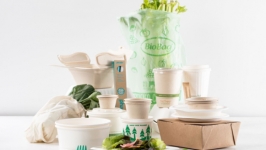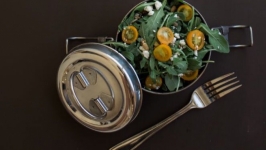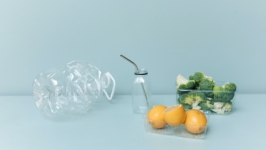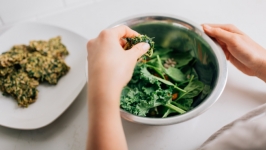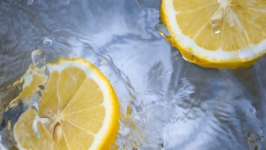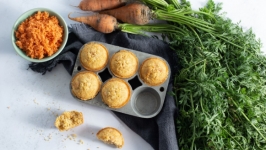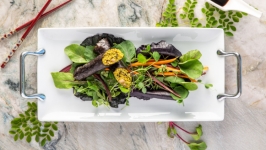Eco-Friendly Takeout Containers for Business
If you’re thinking about switching to greener packaging, there are a number of things to consider, especially if you decide to go it alone, rather than through a purchasing co-op like the one North Florida Green Chamber has set up for its members. One of the biggest decisions you will need to make is whether to go with packaging that’s recyclable or biodegradable. That, in turn, will dictate the types of packaging available to you, and what it is made from. Each type has its pros and cons. Here’s a look at a few of them.
RECYCLABLES
According to a recent report in the Florida Times-Union, in Duval County, “Almost 20 percent of what goes into curbside recycling bins ends up getting tossed after the material is picked up and sorted.” Why is that? According to the EPA, single-stream recycling, where all recyclables are placed into the same bin (as is the case in much of Northeast Florida), has made recycling easier for consumers, but as of 2018, has resulted in about one-quarter of the material collected nationwide being contaminated.
“When one person puts a non-recyclable item in the bin, it contaminates the whole load,” says Christina Kelcourse, Executive Director of the North Florida Green Chamber. “People think they can recycle everything, and throwing things in the recycle bin makes them feel good about all the plastic waste they use. But it's actually hurting.”
To that end, Tara Dodson of Full Circle Resource Management, LLC advises people to check the bottom of their containers before tossing them into the recycling bin, as not all providers recycle all types of recyclable products. “There is a little triangle there that shows a [recycling] number. Most service providers recycle #1's and #'2s, but it is up to the purchaser [and then their customers] to know this,” she said.
For information on what can be recycled in your area, and best practices, visit Republic Services’ (which handles much of the region) website, and enter your address.
Additionally, packaging that once held food, such as take-out boxes and containers, can also contaminate a bin if they are not cleaned properly prior to recycling. So, be sure to encourage your employees and customers to do so before throwing them into a mixed bin.
Despite all these nuances, Kelcourse says that “If you offer recycling at your restaurant, and your consumers actually recycle it at home, then you are helping. But products can only be recycled a few times, so ultimately they will become microplastic.”
And, according to Dr. Quinton White, the Executive Director of Jacksonville University’s Marine Science Research Institute, microplastics (which are even more problematic from non-recyclable plastics) are something we should all be concerned about. “They don't go away, they just get to be smaller and smaller and smaller. And they're persisting - so we're seeing them taken up in the food chain. You're eating and drinking plastic and don't really realize it, but it’s a little scary.”
COMPOSTABLE BIODEGRADABLES
Kelcourse went on to note that while recyclables can be a great option, “compostable products are the best option - even if you don't have [access to] a commercial composting facility - because they won’t turn into microplastics in the landfill, they’ll break down instead. Of course, if possible, they would be better in a compost facility [where they can] make soil and reduce carbon. Composting turns waste into Black-Gold. We compost at home and it’s super easy - our 4 and 6-year-olds even know how to separate the food waste into the right bin! And I am happy to report Jacksonville now has a commercial compost facility, Compost Jax, as well as Apple Rabbit Compost for residential customers who are unable to compost at home.”
However, when purchasing packaging that’s labelled “biodegradable,” it’s important to check how long it will take for them to break down. In general, a compostable product will break down in about 90 days, and while all compostable materials are biodegradable, the opposite is not true.
“One important tip to consider,” says Kelcourse, “is not to pay more for ‘biodegradable’ products unless you see a date listed. Biodegradable is a term used in green washing, because almost everything biodegrades, even if it takes millions of years. For example: You want to purchase products that biodegrade in one to five years [as opposed to 10-20].”
Dodson says that it’s also important to note where compostable products need to be broken down. “Products that are paper-based, like bagasse and cardboard-style boxes, can be composted in your backyard...The most eco-friendly of disposables are those that are made of paper.” However, they are not as durable, especially with liquids, but are steadily becoming more so. She says plant-based products are more durable, but tend to only be compostable in a commercial facility. These include “bioplastics,” which are made from renewable biological sources, such as vegetable oils, to corn starch to food waste, as opposed to traditional plastics, which are made from fossil fuels. There are even a few bioplastic products out there that are edible!
Ultimately, there is a lot of food for thought when it comes to selecting the type of eco-friendly packaging that is best for your business. Fortunately, however, there are resources like Kelcourse and Dodson right here in our community who can help you navigate the process. And, more options are regularly becoming available, which should make them more accessible and viable to a greater number of restaurants in the near future.



